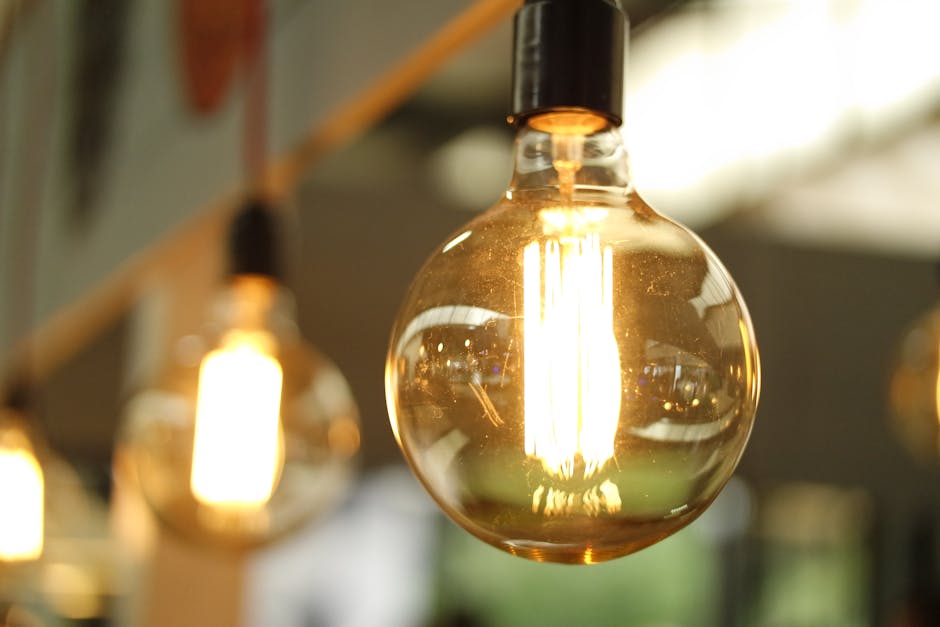By Joyce Breiner
Monocacy Monocle column, November 2023
Greetings from Poolesville Green where we look at how all of us can take action to live more sustainably when it comes to energy choices, transportation and overall energy requirements at home.
Why these three? Because they represent the largest segments of a household’s carbon footprint pie. Reduce these and you can cut down significantly on your contribution to the emissions that are changing our climate.
Let’s look at overall energy use in terms of efficiency. Yes, this will require some math, but let’s be honest, most of us at least consider cost a little when buying something, right?
In 2010, when area citizens came together to establish Poolesville Green, new fangled lightbulbs called compact florescent lightbulbs or CFLs for short were brand new on the market. Lots of folks didn’t like them and some may still not. Not too long after, Light Emitting Diode (LED) bulbs came on the market. Both CFLs and LEDs were more expensive than the century-old tech incandescent bulbs. Over time LEDs have rightfully won out in the market place. Why? Lots of reasons, many of which don’t have anything to do with how long they last or the quality of light they produce or certainly not the fact that they use a small fraction of the energy that a comparable incandescent bulb. But that’s what I want to focus on here – the energy use. A typical 100-watt equivalent LED uses just 18 watts – that’s 82% less energy! Think of it in money terms – Would you pay $100 for something that you can get for $18? If not, think of it similarly, why use 100 watts when 18 will get the job done handsomely? (Don’t nod off yet! We’re gonna have fun!)
Most folks we know don’t have a clue about electricity (and don’t care). Like how much it takes to make a unit of energy (kilowatt hour) and how many units of energy it takes to operate a favorite electrical gadget. And, most importantly, is there a better, as in less expensive and less carbon producing, way to power that gadget? Most folks assume not. The monthly electric bill comes, they see the total bill cost, have a cursory thought about like ‘oh, it’s higher than this time last year’ or ‘oh, it’s better than 3 months ago’, then pay it and go onto the next demand of the day. The big news is when the electric spigot suddenly gets turned off because a huge storm comes through bringing the grid goes down, maybe for a couple of hours but maybe for days. Everything in the household gets impacted: no hot water for showers, no internet, no way to charge our ‘can’t live a 21st century-life without them’ devices. This is why to have a clue and to care in the present not to mention for the future of our families.
Make no mistake, we are fully aware and agree that our first world lifestyles require energy, lots of it and that will continue it to grow. In fact, most experts looking 10-20 years ahead will tell you that the demand for energy will likely increase threefold over that time.
So, what’s one to do? Give up those essential to modern life devices? Live without lights like the Amish? Absolutely not! We can have our cake and eat it too. By the way, did you know the Amish are adopting solar like crazy and why is that? Let’s look at the low hanging energy hungry fruit first.
Lightbulbs. Did you know that changing out incandescent lighting for LED versions can make a demonstrative difference in the electric bill AND pay for cost of the LED bulbs over just a period of months. From then on, the savings just keep adding up. Well, what’s being saved is the energy and the bill reflects that. We know…you’re thinking ‘duh, yeah’.
So, now let’s look at another opportunity – household insulation. Not a very sexy thing to think about and not so much a keeping up with the Jones’ effort to point to, right? Did you know that the typical household insulation upgrade installation project is one of the lowest cost, quickest payoff and energy bill reducing home improvement efforts a homeowner can undertake? The typical reduction in monthly energy bills as a result is 20-25%. This doesn’t just go for 20+ year old homes – even homes just 5-10 years old can benefit greatly. Additionally, household HVAC systems don’t have to work as hard and many homeowners report the home is more comfortable with drafts eliminated. AND there’s help in paying for these projects through the Inflation Reduction Act, state incentives and even utility incentives. All together, these funding mechanisms can bring the cost of a project way down.
You don’t have to do everything at once – that’s partly why the Inflation Reduction Act incentives stretch to 2032. Do a little at a time, start with the low hanging fruit and go from there. One of the best places to begin because it can give you a roadmap: a comprehensive home energy audit (the one with the blower door test). Potomac Edison, as does PEPCO, has a list of qualified energy auditors at their website. Check out RewiringAmerica.org/calculator to start learning about what you may qualify for – you might be surprised. Don’t start a home improvement project without checking!

